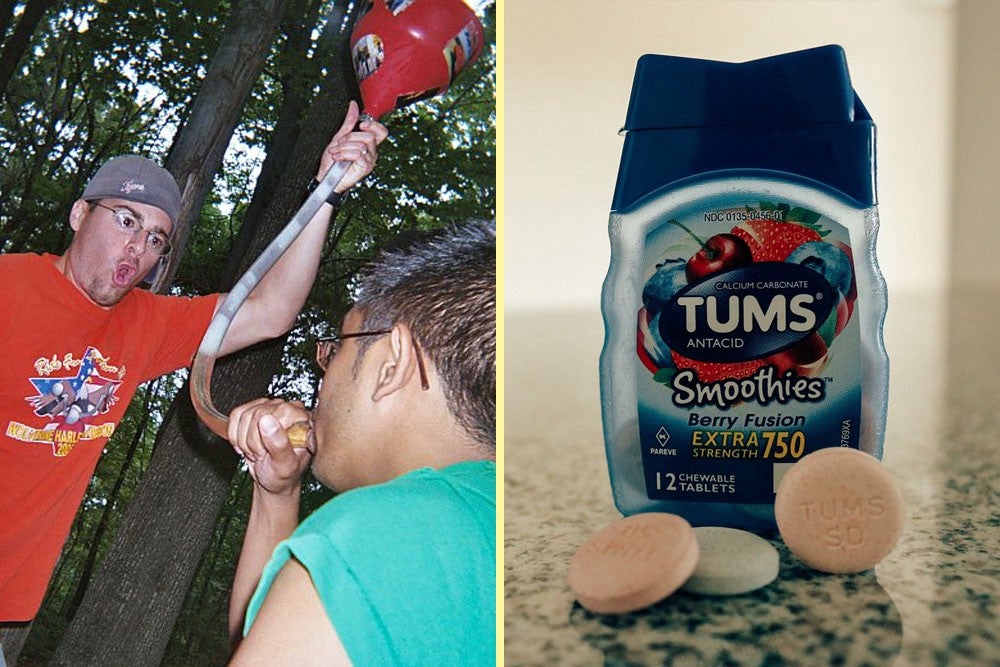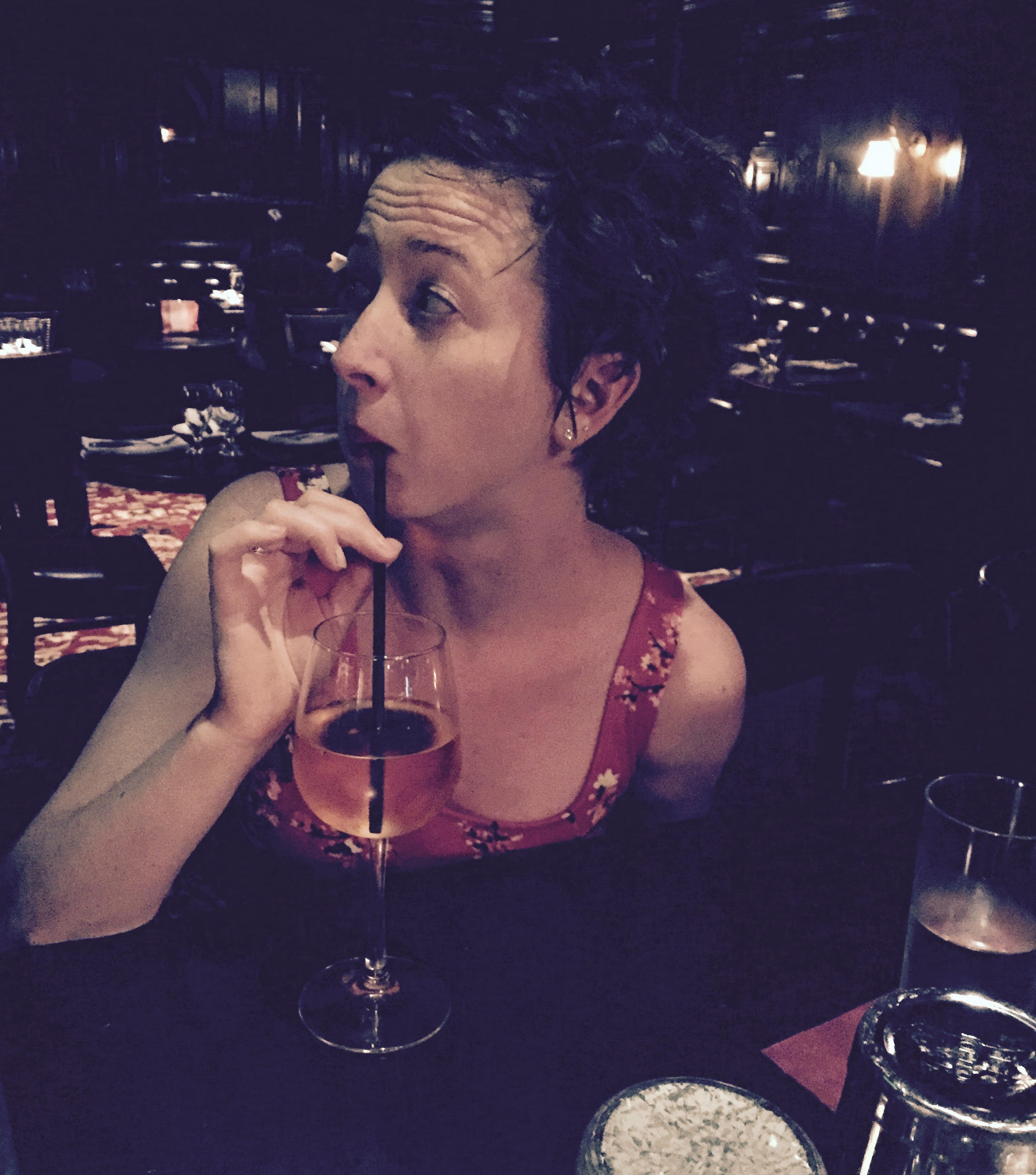As a bartender, it’s my job to combine alcohol with various other things (usually just ice, water and different types of booze) to make better, more interesting drinks.
I can tell you which gin will make the best dirty martini (it’s not Hendrick’s); what aperitif you can swap out with Campari to make a delightful negroni variation (Cappelletti all the way); and why you should always use lime juice in rum drinks as opposed to lemon (it’s an acidity thing).
That said, I also have a pretty extensive list of stuff that shouldn’t be mixed with alcohol. Driving is an excellent example. So is moving heavy furniture and deciding to cut your hair.
There are, however, a handful of things that can land in either camp, and most of them are drugs. The benign: antacids and alcohol, which play together just fine. The kinda bad: caffeine (yes, it’s a drug) and alcohol, which can quickly get you uncomfortably drunk (R.I.P. Four Loko). And the really bad: prescription drugs and cocktails, which can make your liver work overtime, causing everything from increased symptoms of intoxication to death.
Here then is a handy primer of potential unwanted interactions with a list of (fairly) commonly consumed substances.
Tums
Tums is an antacid made of calcium carbonate, a compound commonly found in rocks and minerals and a widely used antacid because it’s able to neutralize the excess stomach acid that causes heartburn and indigestion. Mixing booze and Tums won’t adversely affect your buzz, but alcohol can make any acid imbalance in your stomach worse.
Antibiotics
While most antibiotics don’t react negatively with alcohol, drinking while under the weather isn’t the smartest thing to do since your body needs all its strength to fight whatever is ailing it. And booze can definitely weaken you, prolong your symptoms and/or make you feel more fatigued.
There are, however, a handful of antibiotics that every doctor will tell you to not even think about combining with alcohol while they’re in your system. For instance, metronidazole and tinidazole, commonly known as Flagyl and used to treat a variety of bacterial infections (most commonly bacterial vaginosis, a bacterial imbalance in the vagina often thought to be caused by having lots of sex), will result in Exorcist-style vomiting if mixed with alcohol for up to three days after the prescribed course ends.
Birth Control
Excellent news for everyone interested in penis-and-vagina sex: Combining birth-control pills and alcohol is perfectly safe. However, Planned Parenthood notes that alcohol can impair your judgement and may lead to regrettable decision-making (namely, choosing to have sex with someone who, sober, you might feel differently about). Drinking heavily may also disrupt your morning routine and/or cause you to forget to take your pill, which can, and will, mess with its efficacy. So, as always, condoms are a nice extra security blanket.
Truvada
More good news on the sex front: According to Dr. Albert Liu at the San Francisco Department of Public Health, Truvada, the prescription medication that decreases the chances of contracting HIV, “is not known to interact with alcohol or other recreational drugs in harmful ways.”
Cough Medicine
Three 6 Mafia made getting high off codeine-cough syrup (in)famous almost 20 years ago, but drinking alcohol while you’ve got cough syrup in your system (especially the codeine-infused kind) has been a bad idea since forever. In particular, dextromethorphan, the active ingredient in most over-the-counter cough medicines, augments the not-so-great nervous system-related side effects of alcohol, namely dizziness and drowsiness.
Ibuprofen, Tylenol and Aspirin
Mixing alcohol and acetaminophen, the active ingredient in Tylenol, can cause serious liver damage. Meanwhile, your risk for developing bleeding in your stomach increases drastically if you combine alcohol and non-steroidal anti-inflammatory drugs like aspirin or ibuprofen (i.e., Advil or Motrin).
GHB
Gamma hydroxybutyric is a sleep-aid-turned-club-drug that, in small doses, can be a pleasant alternative to alcohol. Too much GHB, or G, though, can lead to vomiting and unconsciousness — reactions that are practically guaranteed if mixed with alcohol. And because it can cause people to become physically relaxed to the point of serious loss of motor control and memory loss, GHB is also now atop the list of date-rape drugs. So don’t leave drinks unattended. Similarly, don’t take a drink from someone you don’t know unless you see the bartender make it.
Prescription Painkillers
There are four kingdoms of drugs: stimulants, depressants, opioids and hallucinogens. Stimulants (aka uppers) are things like cocaine, caffeine and the whole family of amphetamines. Depressants (aka downers) are things like anti-anxiety meds and sleep aids. Opioids and hallucinogens are fairly self explanatory. The tricky thing about painkillers is that they can criss-cross these worlds.
Vicodin, for example, is a combination of acetaminophen and hydrocodone. Combining alcohol with acetaminophen is, as we already know, bad news for your liver, and hydrocodone is, like alcohol, a depressant. Layering depressants on top of each other enhances their downer effects, making you much more likely to lower your heart rate and blood pressure and leave you excessively drowsy or physically limp. The same can be said for Percocet, another popular (and frequently abused) prescription drug.
Writ large, combining alcohol with Vicodin or Percocet can increase the risk that you’ll have negative or potentially life-threatening side effects.
Benzos
Xanax, Valium and Klonopin are all benzodiazepines, a class of drug that selectively works on gamma-aminobutyric acid-A (GABA-A). GABA, in layman’s terms, tells your brain cells when to fire. Benzos keep your GABA chill as they depress the activity of cells in your brain, telling them to fire less often, which allows you to calm the fuck down.
Combining these drugs with alcohol intensifies the effects of both, leaving you slow, sloppy and miserable at processing information. It also can make you incredibly moody as you’ve doubled-down on substances telling your brain not to care about things so much.
Marijuana
Weed and booze are, other than nicotine, the two most commonly used drugs in the U.S. Combining the two (also known as cross-fading), therefore, is also pretty popular.
And yet, this pairing ends badly for a lot of people. Marijuana is, like alcohol, a depressant, and, like with Benzos, having two substances in your system telling your brain to slow down can leave you half-asleep and completely incapable for forming sentences.
Plus, smoking weed when you’re drunk leaves a lot of people heaving over the toilet since the alcohol in your blood may cause your body to absorb THC faster, leaving you more dramatically affected by the weed. While getting the spins and having to boot-and-rally doesn’t seem like a big deal, if you’ve been drinking heavily, it can be a recipe for disaster. Here’s why: Marijuana has an antiemetic effect, making it difficult to vomit (the reason medical marijuana was originally prescribed to cancer patients to curb the nasty side effects of chemo).
So when it comes to alcohol poisoning — or at least alcohol poisoning and weed — your body might not be able to save itself by booting up those last shots of tequila when you’re stoned, too.
On the positive side of the ledger, there are a number of bars in California and Colorado that are doing interesting things with CBD — the medicinal, hemp-y element of weed — and craft cocktails (a la the “Stoney Negroni” and “The Rolled Fashioned”).
Amphetamines
Combining uppers like Adderall, Dexedrine and good ol’ methamphetamine with downers can go one of two ways:
- The alcohol will dull the effects of the amphetamines which, if you’re cranking through a term paper but really need to sleep, can be a blessing. The danger here is that it also can lead your inner party monster to believe it needs more speed, which could cause an overdose.
- The amphetamines will dull the effects of the alcohol, which, if you’re out dancing all night and really don’t want to call it quits, can be great. The danger here is that this can cause you to drink way more than you normally would (oh my God, I’m, like, not even feeling this), and is a guaranteed horrific hangover (if, that is, you don’t accidentally drink yourself into liver failure).
Cocaine
The physical effects of combining booze and blow are like those of amphetamines — you’re likely going to feel great until you get up the next day. Cocaine and alcohol also form a nasty byproduct called cocaethylene as they’re metabolized by your liver. Cocaethylene has been tied to everything from increased impulsivity, liver damage, cardiovascular issues and risk of stroke.
Hallucinogens
LSD (acid), psilocybin (magic mushrooms) and MDMA (Molly) make you see, hear or feel things that either aren’t really there or are an augmented representation of reality. Common experiences on hallucinogens are increased tactile sensations, feelings of euphoria, alternating lethargy and spurts of energy, and of course, hallucinations.
Side effects of ingesting these substances include nausea, increased body temperature and some serious feels. Therefore, combining alcohol with something that’s already messing with your stomach, not to mention bending your visual surroundings, is a really good way to vomit. On the flip side, alcohol can be used to ease your comedown, the awkward readjustment to reality after several hours on a different plane.
Antidepressants
Because Zoloft, Lexapro and Prozac (among many, many others) are taken daily, your liver is constantly already filtering the drugs from your bloodstream, depleting some of its attention to any booze you might have added to your system — and thus, lowering your tolerance and making you feel drunker. So you should be extra cautious about your alcohol intake when you first start taking medications for depression. Otherwise, alcohol and antidepressants is a fairly safe combination.
One last word: This list is far from exhaustive. For better or worse, there are a whole lot more drugs out there. And while that list is long, an important takeaway here — and one that’s easily forgotten — is that alcohol is a drug, too. And a rather powerful one at that.
So no matter what else you’ve got on board, remember: You’re combining drugs with drugs.
And that’s a killer cocktail.

